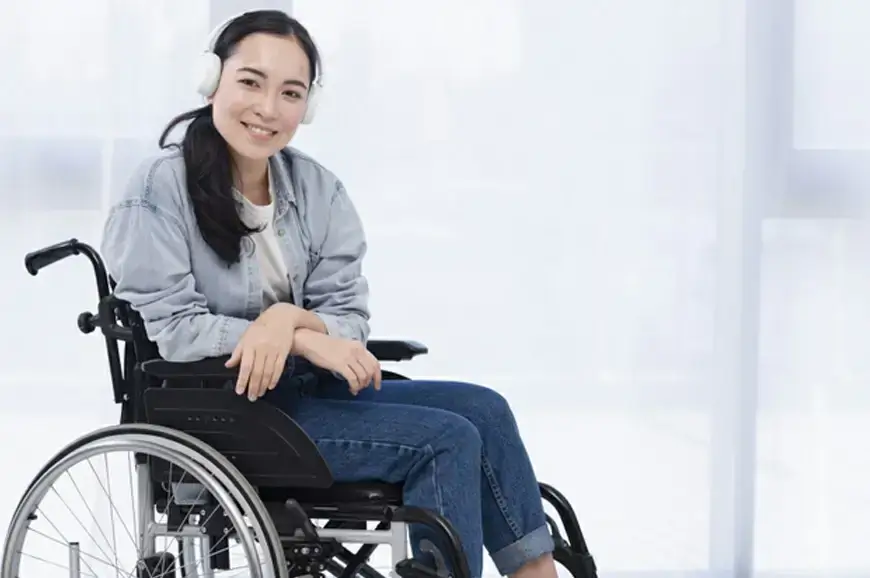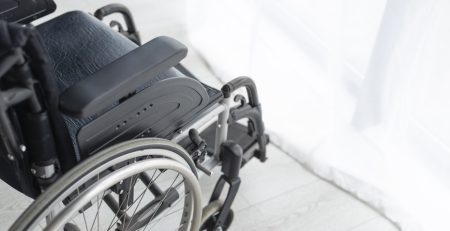- No products in the cart.
How to make your wheelchair more comfortable
In a perfect world, everyone’s mobility device would fit them like a glove and they would have no issues spending an extended period of time as their mobility needs are met. But no one wants to be forced to use a piece of equipment that makes them uncomfortable, causes them pain, or encourages any type of poor posture. That is why there are a variety of ways individuals can make their wheelchair more comfortable. It is important to note that any mobility device that causes you significant pain or promotes bad posture will lead to injury and should no longer be used. Individuals should speak with a mobility specialist to get connected with a device that fits them well. None of these suggestions below should serve as a substitute for this crucial step.
However, if there are simple, minor issues with your wheelchair, it is often easy to make additions, adjustments, and potentially even remove certain attachments. These “quick fixes” can make your experience with a new (or old) mobility device much better and easier on your body at the same time.
Cushions
Adding cushions is one of the easiest and most intuitive ways to add comfort to something. This is typically what people do if they have a dining room chair or even sofa that is not too comfortable. The best option is to seek out a cushion that specifically fits your seat, whether it is intended to go on the seat pad to make your bottom more comfortable or propped up against the back of the chair to prevent straining your spine. You can likely purchase these from wherever you bought your wheelchair from and they can also be found online. Most basic ones are affordable, but you can spend a bit more money to get specially-made gel or foam cushions.
However, if you’re the DIY type of individual or are on a tight budget you can opt for items you find around the home instead. Some people go with standard seat cushions, such as ones that you might find on patio furniture or wooden kitchen chairs/stools. Other individuals choose to use towels or blankets, which is dual-functioning as they can be removed and used to cover your legs in the event you get cold or do not have clothing to layer on. No matter what option you go with, just know that there are a variety of ways to add substance to your wheelchair seat.
Core support
It may be in the best interest of some individuals with minor issues sitting up to get support to prevent this from happening. This is appropriate for individuals who experience fatigue when using their wheelchair for too long, or for those who simply need a little boost to help them assume appropriate posture. These “little boosts” may come in the form of support from padding or inserts placed on either side of the individual.
Think of these core supports as the armrest in your car. Leaning your elbow or arm on them unnecessarily can quickly become a bad habit that promotes poor, slumped posture favoring one side of the body. But if you use them as a cue to remind you to sit up straight using your core muscles, they are actually helping you.
This is another option that should come with a disclaimer. This is because such fixes are not ideal for individuals who have significantly weak abdominal, back, and lateral abdominal muscles that impact their ability to remain safely upright to operate their wheelchair. In these cases, individuals should get specially-made wheelchairs with custom features to allow more structure and support for their torso (and simultaneously, for their limbs as well).
Removing footplates or armrests
While these accessories were intended to give individuals the support they need, they are not necessarily ideal for every wheelchair user. Some active wheelchair users with function of their lower bodies may remove the footplates so they can help propel the wheelchair with their feet. On the other hand, wheelchair users who are slightly more impaired may need this support to assist with circulation and prevent blood from pooling in their feet. Taller individuals may find that footplates are too restrictive and that, even if the wheelchair itself fits them, the footplates do not extend long enough for their legs. In this case, these individuals may be far more comfortable by simply removing the footplates.
Similarly with armrests, some individuals may find them more limiting than anything else. This is especially the case for individuals who use equipment like slide boards to assist with getting in and out of their chair. A lot of core strength is required for that type of maneuver, so individuals may find they don’t need armrests for support, even once they are in their chair. Such individuals may also be more comfortable readjusting their body using the seat of the chair rather than armrests. Armrests may also be up too high for taller individuals, who may opt to also use the seat of their chair to adjust, if they have sufficient abdominal strength to do so.
Adding grips
Another key change to your wheelchair is the addition of grips to existing handles and levers. One great place to add grips (either in the form of simple foam from a craft store or specially-made pieces for certain wheelchair features) is the brake handles. Some individuals with poor grip strength from conditions like arthritis or a stroke may have difficulty successfully using the brake handles on one or both sides of their wheelchair. In order to help this, they may benefit from more padding to make the grip larger and easier to hold, grasp, and move as needed. Individuals who struggle with vision and cannot lean down far enough to see where the brake handles are may benefit from a long handle attachment to make it more visible and within their reach.
Additionally, grips can make push rims far more comfortable for individuals who propel their own wheelchair. Some individuals may opt for fingerless gloves to prevent blisters and the need to touch cold metal. Gloves also improve an individual’s ability to firmly grasp this sometimes awkward rim consistently enough to keep their wheelchair in motion. Alternatively, padding can be added directly to the rim for individuals who do not like wearing gloves.
As you can see, there are many options that make your wheelchair more comfortable and better able to suit your needs. Exploring some of these minor changes can make a large difference in your wheelchair experience. As an added reminder, individuals who suffer from consistent pain of any kind as a result of their wheelchair should seek assistance from a mobility specialist. This professional can recommend more specific add-ons to assist you and, in some cases, may even recommend a new wheelchair if your needs require something additional.















